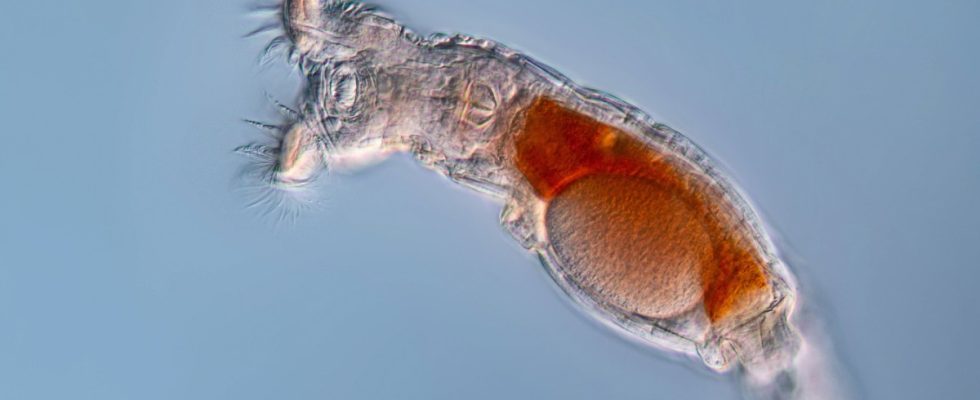Over the years, plastic waste in water breaks down into smaller and smaller pieces that are potentially more dangerous to organisms. Tiny animals could play a part in this process to a extent that has hardly been imagined before, reports a research team from the Ocean University of China in Qingdao in the specialist journal Nature Nanotechnology. Even a single rotifer can produce more than 350,000 plastic nanoparticles every day. In some bodies of water, tens of thousands of these transparent multicellular organisms, measuring just half a millimeter in size, live per liter of water.
Microplastics are particles up to five millimeters in size. Plastic particles that measure less than a micrometer are called nanoplastics. One piece of microplastic can produce huge amounts of nanoparticles, which is why the shredding process is problematic, says Annika Jahnke, head of the Department of Ecological Chemistry at the Helmholtz Center for Environmental Research in Leipzig. Smaller particles could be mistaken for food and eaten by significantly more marine life.
Compared to microplastics, the nanoparticles also have a relatively larger surface area. This makes them more reactive, “so chemicals can be released from the particle more quickly,” says Jahnke. Contain plastics some poisonous Additives that are intended to make them softer, harder, flexible, colored or fire-resistant. Because the nanoparticles can also collect toxins and pathogens from their environment like a sponge, organisms would also absorb more pollutants with them.
Nanoplastics are therefore potentially more harmful to the environment and the health of people and other living beings than microplastics, according to the specialist article. “Recent studies show that the very small particles can cross cell membranes and could therefore remain in the body longer than larger particles,” explains Jahnke. Researchers already have nanoplastics in the brainin blood, the uterus and detected in human breast milk.
Other aquatic creatures also mistake plastic waste for food
The rotifers apparently confuse plastic with their natural food. They otherwise crush and grind algae or organic residues with their chewing stomach. The research team led by Baoshan Xing from the Stockbridge School of Agriculture in Amherst, Massachusetts, placed the colorless and transparent animals with microplastic particles of different sizes in a water container. The group observed what was happening under the microscope: the rotifers particularly ingested particles that were similar in size to their algae food. A short time later, many nano-sized particles accumulated in her digestive tract, which were ultimately excreted. Other aquatic inhabitants also confuse plastic waste with their traditional food. This was already described for Antarctic krill in a specialist journal in 2018.
However, rotifers are much more widespread. There are 2,000 known species worldwide, occurring both in the sea and in freshwater. They are found primarily in the temperate and tropical zones of the world – where microplastic pollution is particularly high. The contribution of rotifers to the global production of nanoplastics is likely to be correspondingly large. For Lake Poyang in China, the country’s largest freshwater lake with an area of almost 3,700 square kilometers, Xing’s team calculated that rotifers produce more than 13 quadrillion such nanoparticles every day.
And the plastic problem is expected to get worse, show OECD forecasts: Around 400 million tons of plastic are currently produced every year. The production of plastics will double by 2050 – and even triple by 2060. Only a tenth of plastic waste is currently recycled; the rest is burned, ends up in landfills or uncontrolled in the environment. The Micro and nanoplastics do not just come from rotting plastic waste, but also from abrasion from tires, dust from the plastics industry, from the washing machine, if there are clothes made from synthetic fibers or from microbeads in cosmetics. International representatives are currently fighting to combat plastic pollution a UN summit in Nairobi to reach an agreement. Whether this should ban certain types of plastic or regulate the more than ten thousand chemicals contained in everyday plastics is part of the debate.

